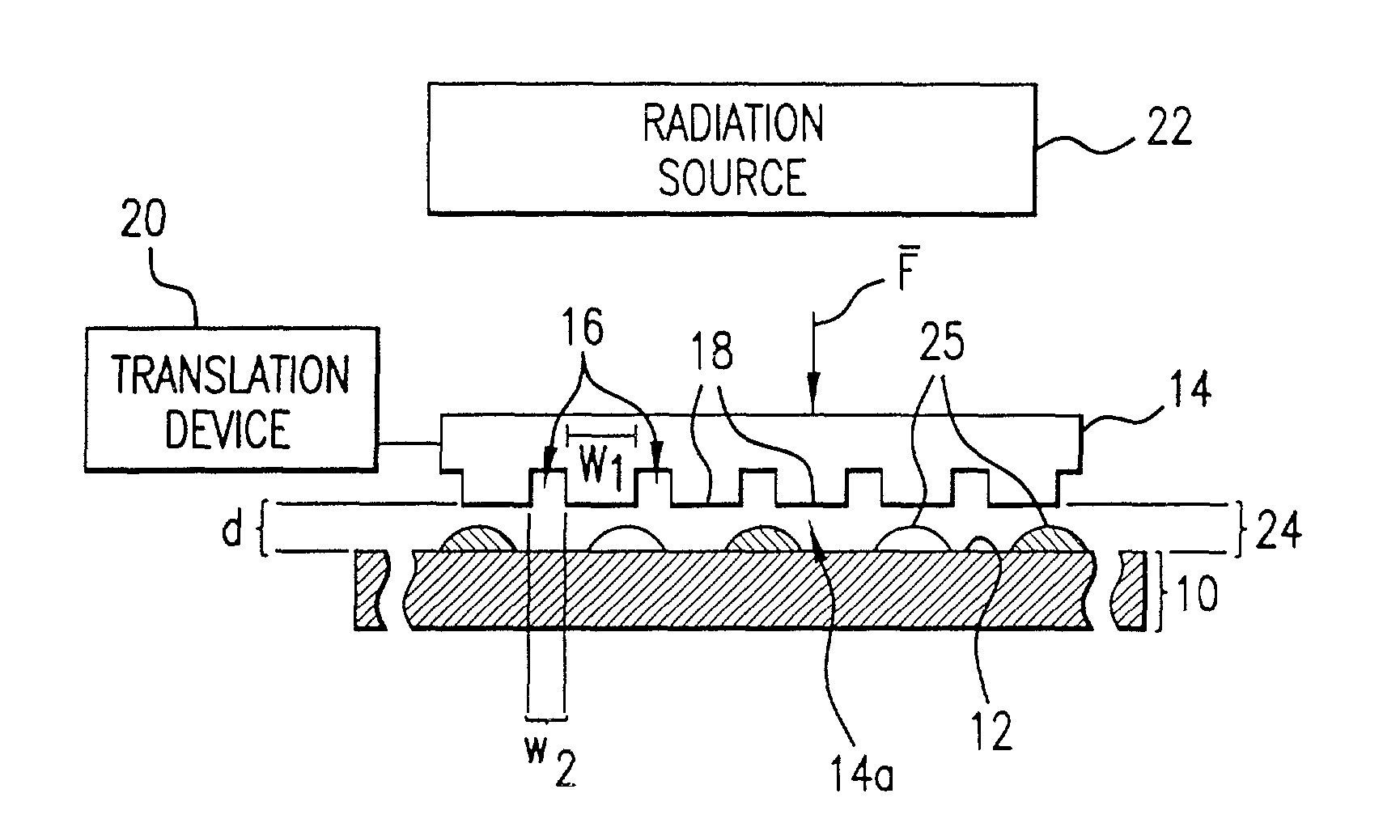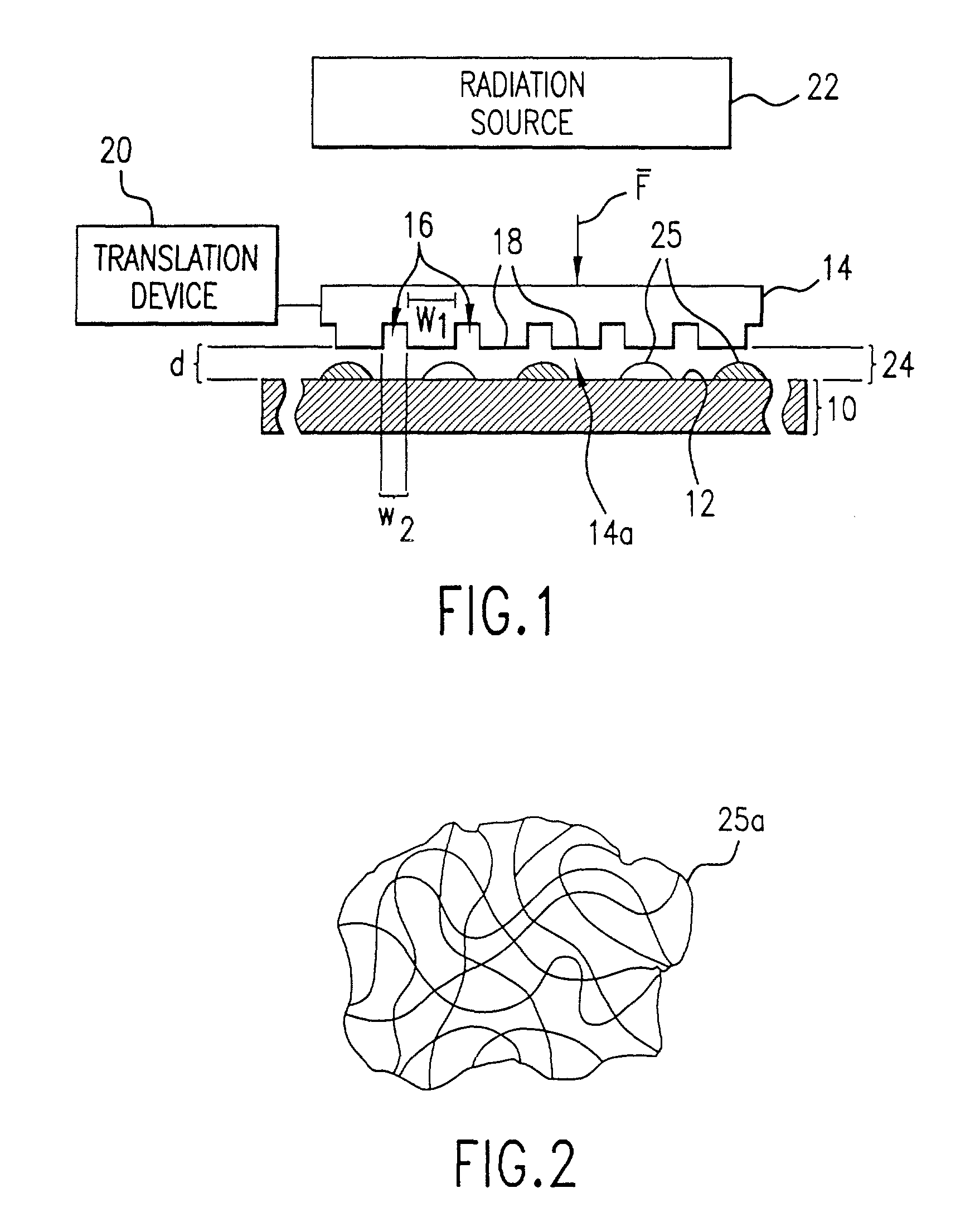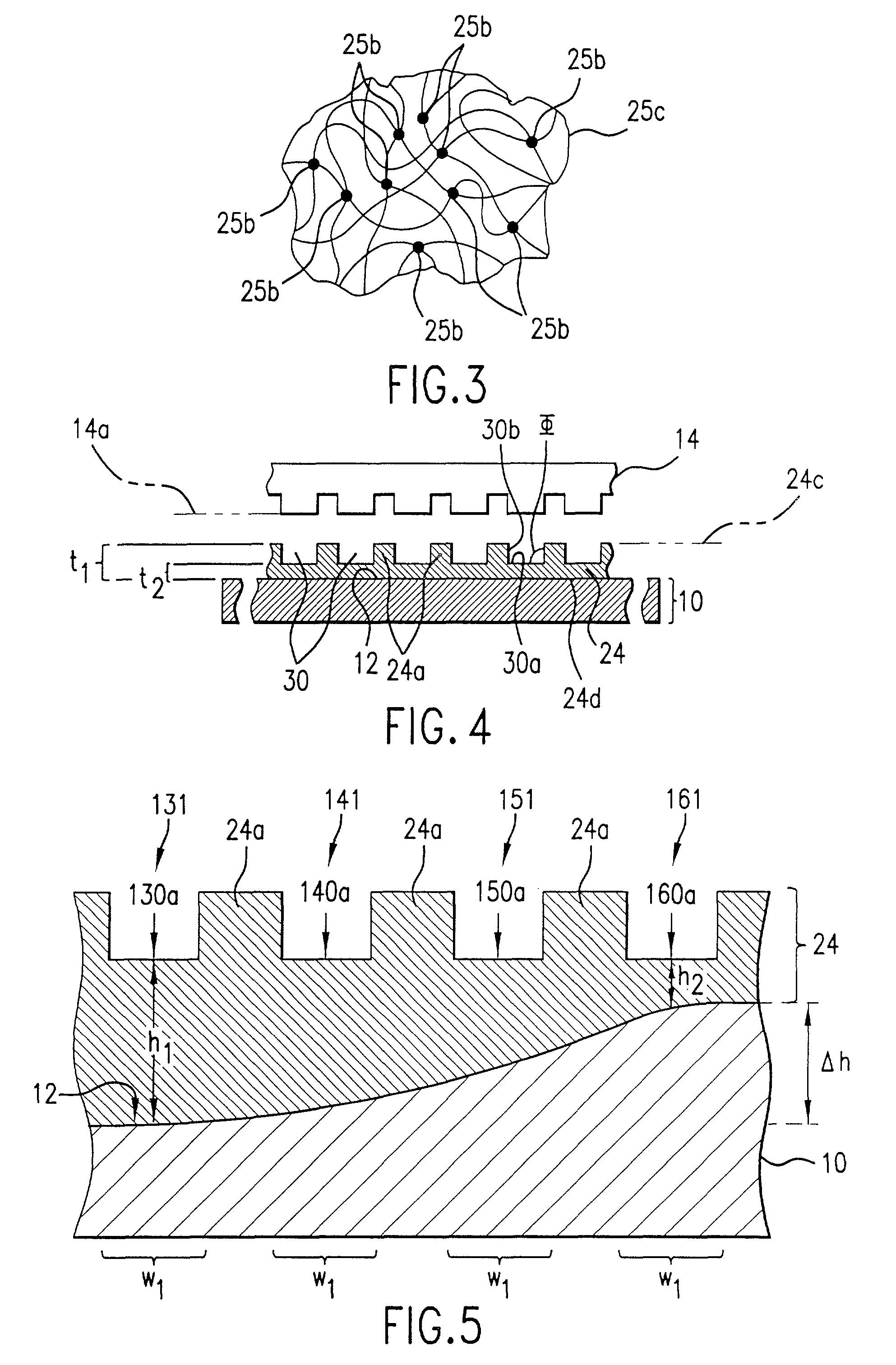Method to arrange features on a substrate to replicate features having minimal dimensional variability
a technology of features and substrates, applied in the field of patterning substrates, can solve the problems of low yield rate, time-consuming post-process characterization step, and difficulty in repeatably producing reliable accurate metrology standards, so as to minimize the thickness variation in the layer, minimize the dimensional variability of features, and reduce the effect of thickness variation
- Summary
- Abstract
- Description
- Claims
- Application Information
AI Technical Summary
Benefits of technology
Problems solved by technology
Method used
Image
Examples
Embodiment Construction
[0020]Referring to FIG. 1, a lithographic system in accordance with an embodiment of the present invention includes a substrate 10, having a substantially planar region shown as surface 12. Disposed opposite substrate 10 is an imprint device, such as a mold 14, having a plurality of features thereon, forming a plurality of spaced-apart recessions 16 and protrusions 18. In the present embodiment, recessions 16 are a plurality of grooves extending along a direction parallel to protrusions 18 that provide a cross-section of mold 14 with a shape of a battlement. However, recessions 16 may correspond to virtually any feature required to create an integrated circuit. A translation device 20 is connected between mold 14 and substrate 10 to vary a distance “d” between mold 14 and substrate 10. A radiation source 22 is located so that mold 14 is positioned between radiation source 22 and substrate 10. Radiation source 22 is configured to impinge radiation on substrate 10. To realize this, mo...
PUM
| Property | Measurement | Unit |
|---|---|---|
| Volume | aaaaa | aaaaa |
| Volume | aaaaa | aaaaa |
| Volume | aaaaa | aaaaa |
Abstract
Description
Claims
Application Information
 Login to View More
Login to View More - R&D
- Intellectual Property
- Life Sciences
- Materials
- Tech Scout
- Unparalleled Data Quality
- Higher Quality Content
- 60% Fewer Hallucinations
Browse by: Latest US Patents, China's latest patents, Technical Efficacy Thesaurus, Application Domain, Technology Topic, Popular Technical Reports.
© 2025 PatSnap. All rights reserved.Legal|Privacy policy|Modern Slavery Act Transparency Statement|Sitemap|About US| Contact US: help@patsnap.com



